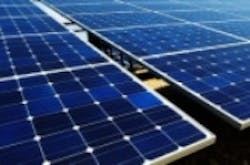Laser processing can lower temperatures used in solar cell production
Rochester, NY - Natcore Technology has concluded that its black silicon technology could reduce silicon solar cell production costs by up to 23.5%. As a result, the company has recently taken additional steps that could further reduce production costs and hazardous effluents.
Black silicon technology can eliminate the plasma enhanced chemical vapor deposition (PECVD) of silicon nitride currently in solar cell production lines. Natcore scientists are now developing laser processing to replace the high-temperature diffusion furnace in the solar cell production process, thus significantly reducing energy and chemical costs associated with the furnace. The company has identified a versatile laser that the company plans to acquire for its R and D Center in Rochester.
In typical solar cell manufacturing, the surface of the cell is doped in a process that involves heating the entire silicon wafer to a temperature in the range of 800 to 900C. The process can damage the silicon and wastes considerable energy. Laser doping works by firing a focused laser beam on the wafer. A small amount of dopant is initially sitting on the surface.
The laser beam actually melts the silicon, which then re-solidifies, usually in less than one microsecond. The microsecond, however, is enough time to accomplish the doping.
Because the laser delivers energy to a very localized area, it would heat only that portion of the wafer that needs to be heated and can lead to more efficient solar cells. Furthermore, a laser would reduce the amount of energy required to produce solar cells, because it would no longer be necessary to heat the whole cell and the furnace around it.
The laser that is being considered by Natcore can be extensively manipulated so that optimum conditions can be found. Natcore is working with the laser producer to process an initial set of samples at its facility to accelerate Natcore's schedule.
To gain expertise in the use of lasers to process solar cells, Natcore has engaged Prof. Mool Gupta and his research group at the University of Virginia. Professor Gupta is a Langley Distinguished Professor in the Department of Electrical and Computer Engineering, and is also the Founding Director of NSF Industry/University Cooperative Research Center (I/UCRC) for Lasers and Plasmas at the university.
"Between Prof. Gupta and Dr. Dave Carlson (a member of Natcore’s Technology Advisory Board) we have two individuals who have deep experience in this field," says Dr. David Levy, Natcore’s Director of Research & Technology. "For Natcore, adding laser processing to our repertoire has important implications. First, it gets us in on the ground floor with a technology that we feel will represent the next generation of high-efficiency/low-cost solar cells. Second, it’s an excellent fit with our black silicon technology."
"We are reinventing the way that solar cells are made," says Chuck Provini, Natcore’s president and CEO. "We are streamlining the process by removing costly steps and by eliminating dangerous and expensive chemicals, like silane and phosphorous oxychloride. We are making it a low-temperature process. Although we can’t quantify it yet, we believe the result will be lower cost, higher efficiency and better quality. We believe that’s what our licensees will want."
Photo courtesy of Natcore Technology
